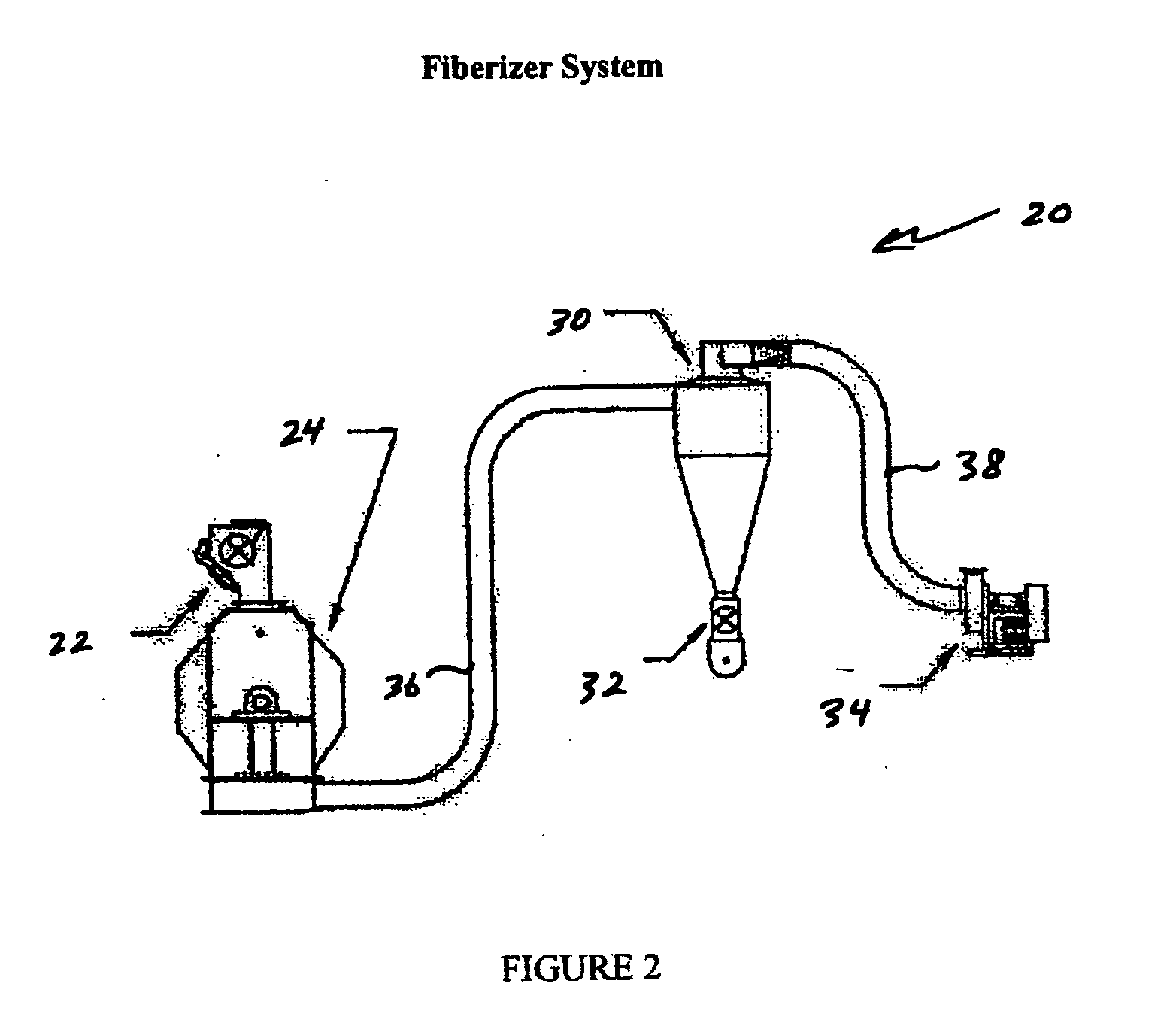Compounding of fibrillated fiber
a technology of fibrillated fibers and composites, applied in the field of preparation of natural fibers, can solve the problems of difficult compounding, high cost of fiber reinforcement, heavy weight, etc., and achieve the effects of improving the quality of fibrillated fibers
- Summary
- Abstract
- Description
- Claims
- Application Information
AI Technical Summary
Benefits of technology
Problems solved by technology
Method used
Image
Examples
Embodiment Construction
[0015] In the description which follows, any reference to direction or orientation is intended primarily and solely for purposes of illustration and is not intended in any way as a limitation to the scope of the present inventions. Also, the particular embodiments described herein, although being preferred, are not to be considered as limiting of the present inventions.
[0016] Referring to FIG. 1, an exemplary fibrillation process 10 and compounding process 12 in accordance with the present invention are shown. These processes provide for the fibrillation and compounding of natural fibers that can be used for reinforcing plastic or polymer composites
[0017] In one exemplary preferred embodiment, the fibrillation process 10 provides for mechanically fibrillating or fiberizing natural fibers into individual fibers or fiber bundles. The process includes providing a natural fiber such as flax, hemp, kenaf, jute or other natural fiber products. Other fibers include oilseed and linen flax...
PUM
| Property | Measurement | Unit |
|---|---|---|
| length | aaaaa | aaaaa |
| speed | aaaaa | aaaaa |
| force | aaaaa | aaaaa |
Abstract
Description
Claims
Application Information
 Login to View More
Login to View More - R&D
- Intellectual Property
- Life Sciences
- Materials
- Tech Scout
- Unparalleled Data Quality
- Higher Quality Content
- 60% Fewer Hallucinations
Browse by: Latest US Patents, China's latest patents, Technical Efficacy Thesaurus, Application Domain, Technology Topic, Popular Technical Reports.
© 2025 PatSnap. All rights reserved.Legal|Privacy policy|Modern Slavery Act Transparency Statement|Sitemap|About US| Contact US: help@patsnap.com



